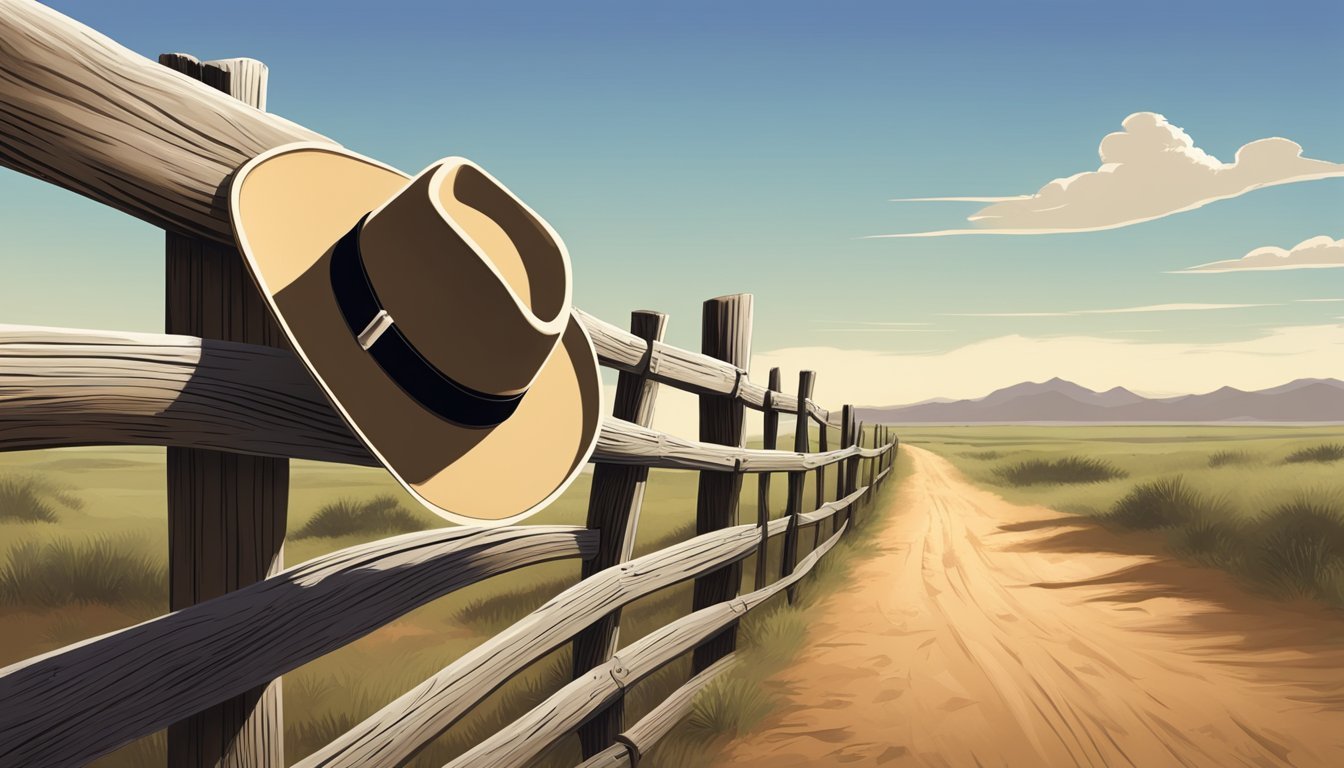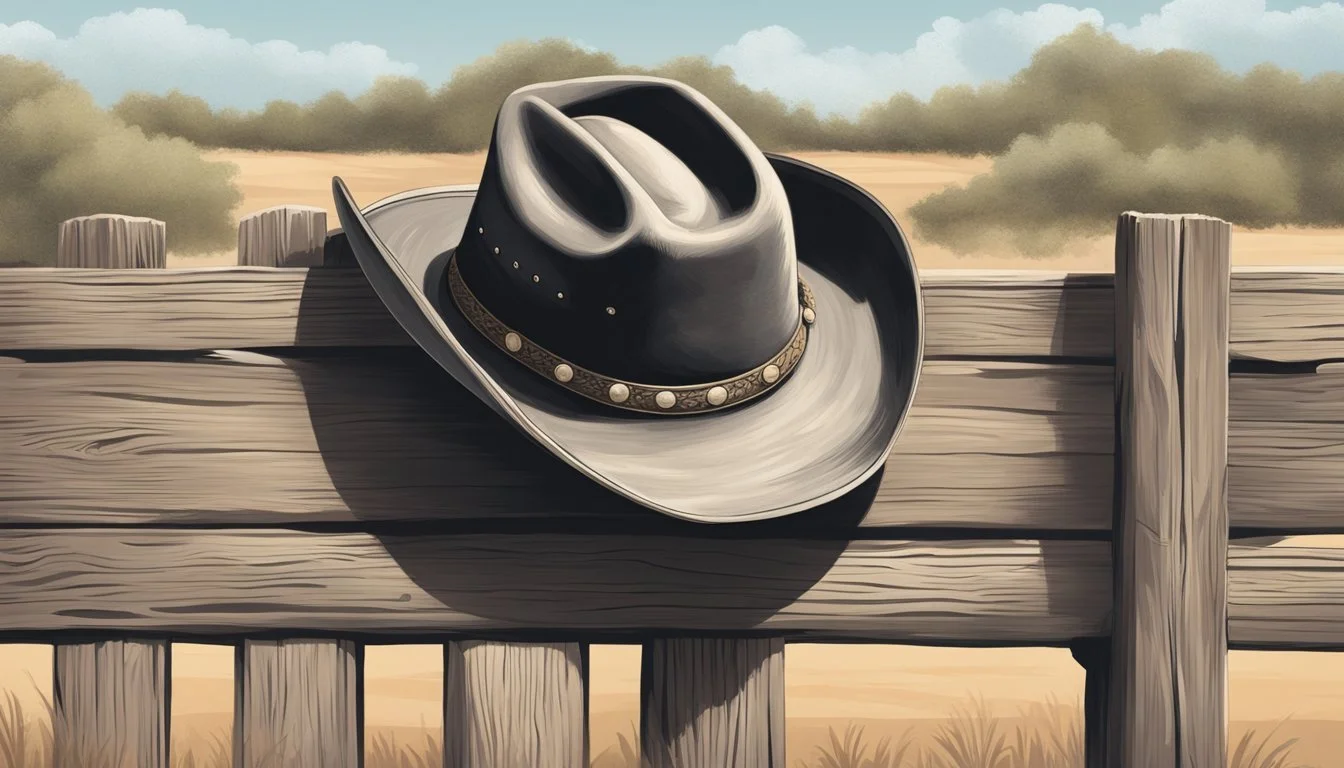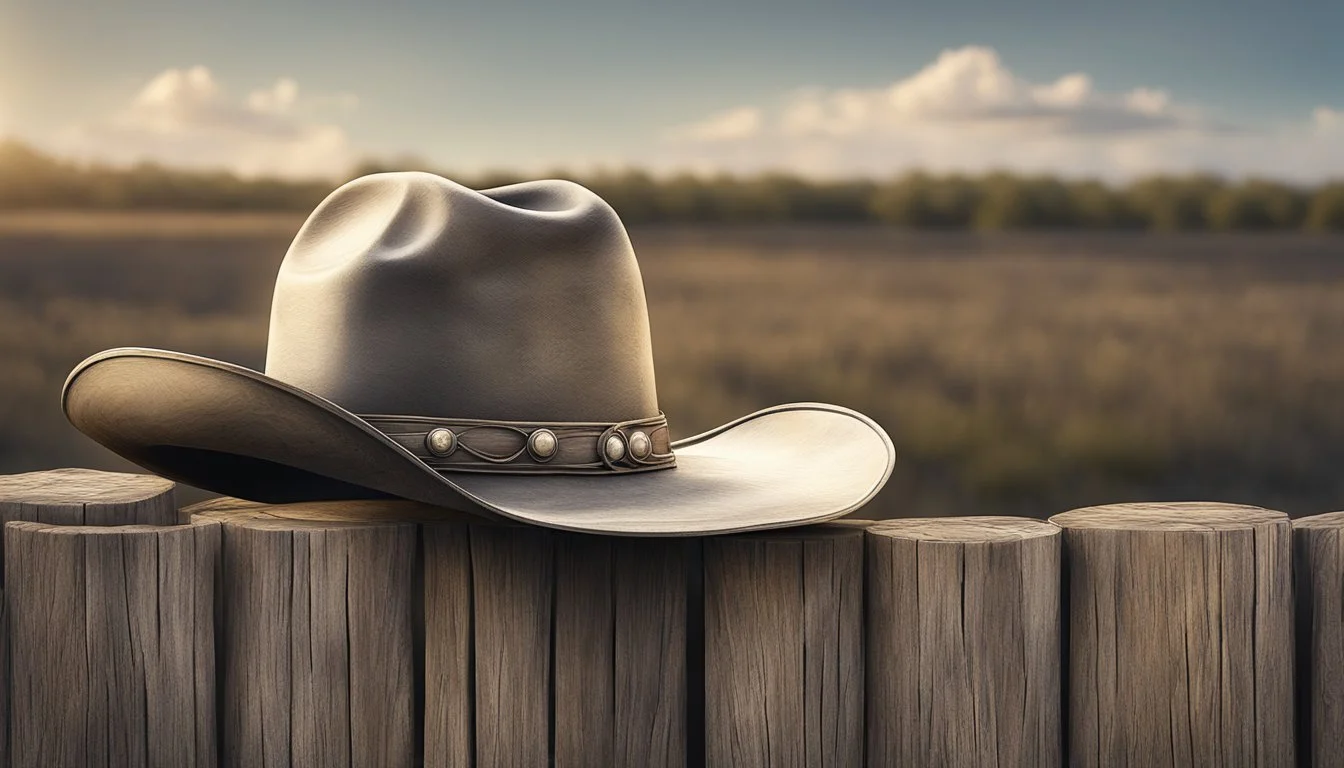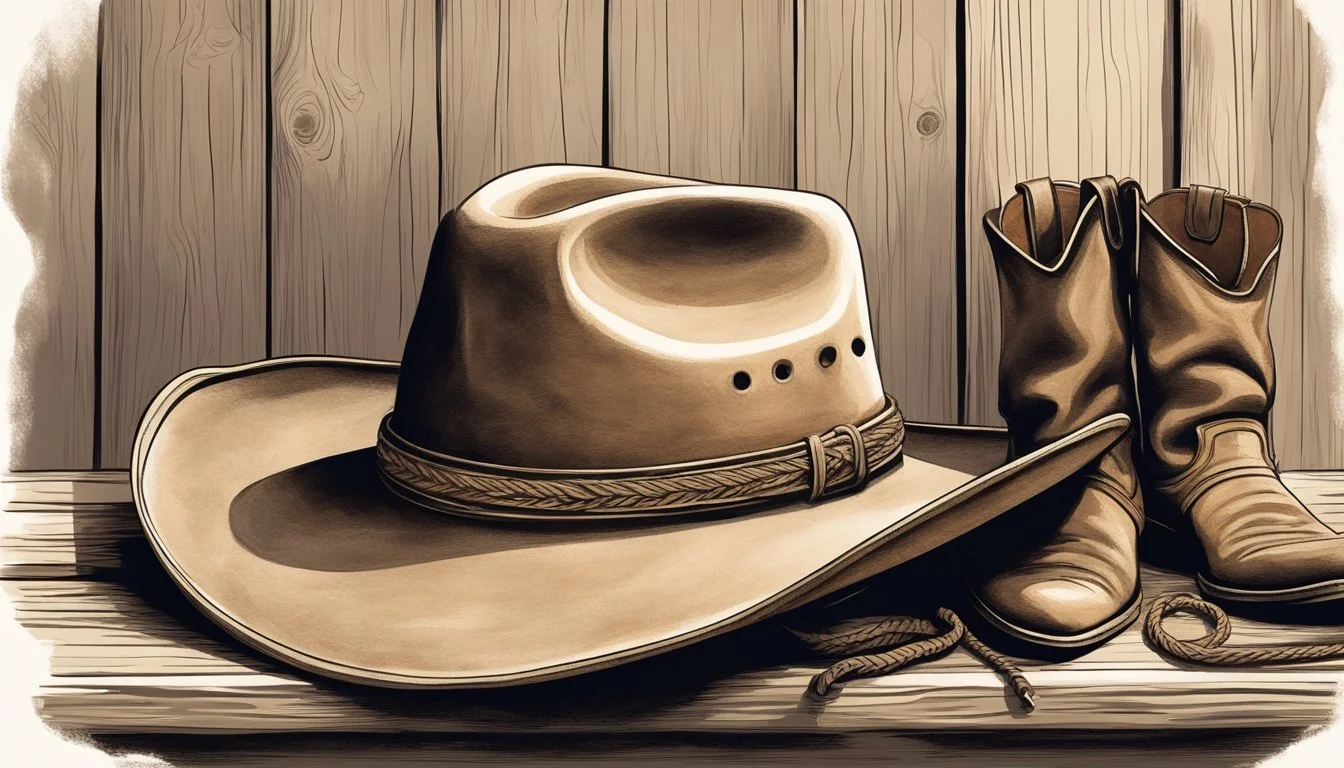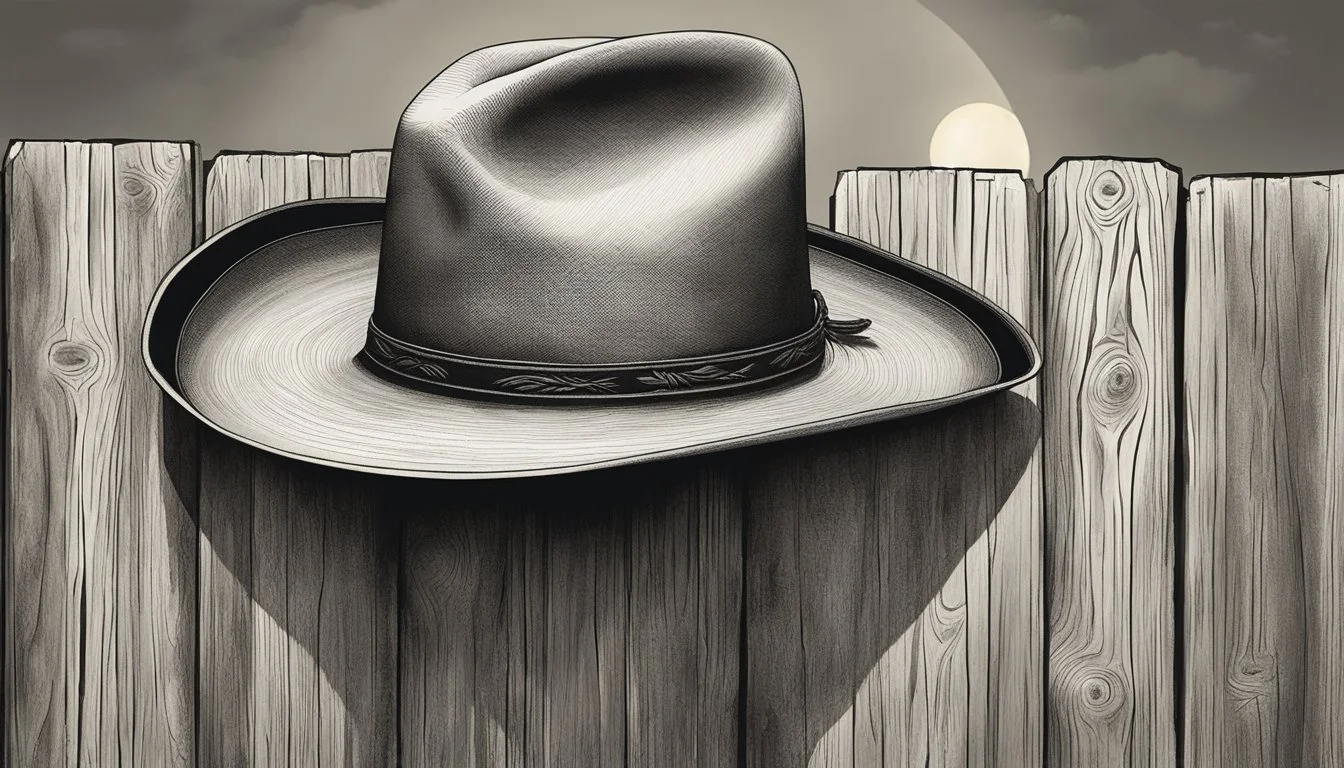The Texas Cowboy Hat
Unveiling Its Iconic Status and Cultural Significance
The cowboy hat stands as an iconic symbol of Texas, encompassing the state's rich history and its people's unwavering pride. Rooted deeply in the traditions of cattle ranching, the cowboy hat is not merely a piece of attire—it embodies the authentic spirit of the Lone Star State. This headgear represents a fusion of style and practicality, having evolved from the necessity of shielded eyes and necks from the relentless sun to becoming a cherished emblem of Texan identity.
In local culture, the cowboy hat has transcended its functional origins to become a statement of personal and regional pride. While cowboy boots accentuate the Texan silhouette, it is the hat that crowns the ensemble, often worn as a badge of honor. This distinctive shape and style connect Texans to their storied past, honoring the legacies of the cowboys and cowgirls who forged their living under the vast Texas sky.
Adopting the cowboy hat as an official state symbol, Texas became the first in the nation to elevate this accessory to such a distinction. Its representation permeates various facets of Texan life, from political figures and law enforcement to entertainment culture and everyday citizens. The adoption reflects the state's ongoing commitment to preserve the symbolic essence of its culture and the unity of its identity.
Historical Origins of the Cowboy Hat
The cowboy hat stands as an emblem of the American West, tracing its lineage back to designs adapted from Mexican vaqueros. Not just a fashion statement, this headwear was designed to withstand tough conditions while herding cattle.
Early Influence of Vaqueros and Sombreros
The roots of the cowboy hat are entwined with the heritage of Mexican vaqueros, the original cowboys, who brought much of their horse riding and cattle herding culture to the North American ranching frontier. Their broad-brimmed sombreros were practical for providing shade and protection from the elements, a necessity in the relentless sun of Mexico and the wider American West. These early hats, crafted from straw or felt, became integral to the vaquero’s daily attire.
Evolution From the Mexican War to John B. Stetson
Following the Mexican War in the mid-19th century, the interchange between American and Mexican cultures led to a blending of hat styles. John B. Stetson introduced his first design, the "Boss of the Plains," in 1865, influenced by the wide-brimmed style of sombreros. It featured a high crown for insulation and a wide, flat brim for protection from the sun, becoming a standout design that would pave the way for future iterations of the cowboy hat. The durability and functionality of Stetson's hat made it an instant hit among the ranchers and cowboys of the American West, solidifying its place in American culture and history.
Stetson’s creation not only provided protection but also came with a sense of style that appealed to the aesthetic of the time. The significance of these hats was not just about work; they became a symbol of identity and regional pride.
Design and Structure
The Texas cowboy hat is recognized for its distinctive shape and robust construction, essential for the harsh conditions of the West. Its design has evolved, balancing style and function, to become a symbol of Texan identity.
Defining Features: Brim and Crown
The brim and crown are the two main components that define the cowboy hat's silhouette. The wide brims serve not only as a protection from the sun's harsh rays but also as a shield against rain. Typically, the brim measures between four to five inches. The crown, which can come in various shapes, notably includes designs such as the "Boss of the Plains," which has a high, rounded dome.
Material Choices and Durability
Cowboy hats are traditionally made from high-quality, natural materials such as felt, which is often derived from beaver or rabbit fur, and sometimes from wool for more budget-friendly options. Felt hats have a dense, soft texture and are valued for their excellent durability and water resistance. Modern cowboy hats may also use materials such as straw or leather to suit different needs and climates.
Construction: The Making of a Cowboy Hat
The process of creating a cowboy hat involves several meticulous steps. It starts with the selection of materials, where felt or other chosen materials are shaped under heat to form the iconic crown and brim. A sweatband on the inside and a decorative hat band on the outside often complete the hat. Detail-oriented craftsmanship is key, as it ensures both the longevity and the aesthetic appeal of the cowboy hat.
Cultural Significance
The cowboy hat embodies not just the practical needs of ranch life but also serves as a potent icon of Texan heritage and the American West. Its evolution from function to fashion symbolizes a tradition that bridges past and present.
Cowboy Hat as a Symbol of Texan Heritage
The cowboy hat is deeply entrenched in Texan identity, representing a legacy that goes beyond mere headwear. It serves as a testament to the state's ranching history and its enduring symbols of independence and resilience. Texans often don this emblematic accessory as an expression of state pride and a connection to their cowboy heritage.
Role in the American West and Rodeo Culture
In rodeos across the Southwest, cowboy hats are not merely accessories but are integral to the fabric of this competitive sport. They epitomize the quintessential image of the American cowboy, reflecting a culture noted for horsemanship and expertiese in cattle herding. Rodeos preserve and celebrate this aspect of American history, with cowboy hats central to the attire of competitors and enthusiasts alike.
From Function to Fashion: The Modern Cowboy Hat
While originally designed for the practical purpose of shielding wearers from the elements, cowboy hats have transcended their utilitarian roots. Today, cowboy hats are a staple in Western fashion, appreciated for their aesthetics and craftsmanship as much as for their practicality. Both on the streets and in high-end boutiques, cowboy hats symbolize a unique blend of tradition and modern style.
Variations and Personalization
The cowboy hat is more than just a protective headgear; it serves as a canvas for personal expression through various colors and styles, as well as personalized decorations. These elements combine tradition with individual taste, creating hats that are both functional and emblematic of a wearer's identity.
Colors and Styles: From Classic Brown to Modern White
Cowboy hats come in a range of colors and styles, each offering a different aesthetic appeal and occasionally different functions. The traditional color palette includes earthy tones like brown and tan, which are often chosen for their classic look and their practicality in concealing dirt. However, modern trends have seen a rise in the popularity of black and white cowboy hats, which can make bold fashion statements.
Black cowboy hats are particularly popular for formal occasions and are often associated with a sense of mystery and elegance.
White cowboy hats tend to be favored in the summer months due to their ability to reflect sunlight, making them a cooler option in hot weather.
The shape and size of the brim and crown can also vary, with wide brims providing more sun protection — a practical choice for ranch work or outdoor activities.
Decorations: Hatbands, Feathers, and More
Personalization of cowboy hats often involves the addition of decorations that reflect the wearer's personality and style. Hatbands are the most commonly used accessory, ranging from simple leather strips to ornate silver conchos.
Hatbands may be made of various materials such as braided horsehair, beads, or even reptile skins, each providing a different texture and look.
Feathers can be tucked into the hatband for a touch of flair, often selected by the wearer to add a unique color accent or for their personal significance.
Decorations are not simply for aesthetic purposes; they can also signify affiliations, achievements, or personal milestones. These customizations make each cowboy hat a bespoke piece of attire, rich with individual character.
Social Etiquette and Traditions
The cowboy hat is not merely a fashion statement in Texas; it is a component deeply embedded in the customs of respect and courtesy. Specific practices guide how individuals wear and handle this iconic headwear, and an array of superstitions underscore its cultural significance.
Proper Wearing and Handling
Removing the Hat: An act of respect, individuals should remove their cowboy hats during prayer, in church, at indoor weddings, funerals, during the national anthem, and the Pledge of Allegiance. Additionally, one should lift their hat when addressing church elders or when meeting a lady for the first time.
Handling: One should hold the cowboy hat by the crown to keep the lining hidden, which is considered a sign of good etiquette.
During Meals: It is polite to take off the cowboy hat while seated for dining.
Myths and Superstitions: Bad Luck and Etiquette
Myths: Putting a cowboy hat on a bed is often regarded as bad luck, a superstition held by many in Texas.
Bad Luck Avoidance: Some believe avoiding certain actions, like dropping the hat or passing it directly to another person, can prevent misfortune.
Hat Etiquette Superstitions: Certain etiquettes associated with the cowboy hat are mingled with superstitions, such as the belief that a hat set upside down would bring bad luck. It is thought best to rest the hat upside down on its crown to preserve its shape and purportedly, to keep the luck from spilling out.
Practical Considerations
The Texas cowboy hat is designed with specific features to address practical needs such as climate adaptability and personal comfort during wear.
Climate Adaptability: Ventilation and Weather Resistance
Cowboy hats offer substantial protection in various weather conditions, which is crucial in the Texas climate. The wide brim provides shade from the sun, reducing the risk of heatstroke and sunburn. Many hats are made with materials that offer some degree of water resistance, making them suitable for light rain.
Ventilation: Quality cowboy hats often feature built-in ventilation systems, such as eyelets or a mesh crown, promoting air circulation and helping to keep the head cool.
Materials: Felt and straw are common materials that offer different levels of weather resistance. Felt is dense and water-resistant, ideal for cooler, wetter months, whereas straw is more breathable and suited for the Texas heat.
Sizing and Shaping for Comfort
The fit and shape of a cowboy hat are essential for both comfort and functionality. An improper fit can lead to discomfort or the hat being easily dislodged by wind or movement.
Sizing: It should sit comfortably on the head without pinching or feeling loose. An adjustable sweatband or padding can improve the fit.
Shaped: The hat's crown and brim can be shaped according to the wearer's preference, which affects both style and how the hat shields from the elements. Shaping can also influence how the hat interacts with the surrounding environment, ensuring it doesn't obstruct vision or catch the wind excessively.
The Cowboy Hat in Modern Times
The cowboy hat remains a potent symbol of Texan identity and has seamlessly integrated into modern fashion trends and cultural events, transcending gender and occasion in its widespread appeal.
Influence in Fashion and Pop Culture
Today's fashion industry often draws inspiration from the storied heritage of the cowboy hat, utilizing its distinctive shape and cultural resonance as a fashion statement. The iconic silhouette of the cowboy hat has been seen on runways, adopted by high-fashion designers, and it frequently appears in popular media, cementing its status as a timeless piece of Americana. Celebrities often don the hat, adding to its allure and keeping it relevant in public consciousness.
Adaptation for Men, Women, and Events
Men and women have embraced the cowboy hat beyond its traditional uses, adapting it to personal styles and various occasions. Its universal appeal is evident, with adaptations including:
Materials: Lightweight fabrics for comfort in urban settings
Designs: From flamboyant styles for musical festivals to understated elegance for formal outdoor events
Cultural Events: Central to rodeos and country music concerts
The broad spectrum of designs and styles makes the cowboy hat an accessory fit for nearly every occasion, ensuring that its legacy continues unabated in contemporary society.
Notable Cowboy Hat Brands and Contributions
The evolution of the cowboy hat is a tale interwoven with practicality and style, encapsulated by iconic brands that have become symbols of the American West.
Stetson's Legacy and the Boss of the Plains
Stetson is arguably the most famous name in cowboy hats, having solidified its prominence since the late 19th century. John B. Stetson's creation, the "Boss of the Plains," was a rugged, wide-brimmed hat designed to withstand the harsh conditions of the frontier. With a high crown for insulation and a brim that shielded wearers from sun and rain, it was not just a hat, but a tool for the working cowboy. Today, Stetson hats remain synonymous with durability and are a testament to the brand's impact on the cowboy culture.
Year Established: 1865
Known For: Boss of the Plains, Durability
Contribution: Setting the standard for cowboy hat design
Resistol, Ariat, and the Fort Worth Impact
Resistol emerged as a key player in the cowboy hat industry. Since its founding in 1927, Resistol hats have been crafted with a focus on quality and continuity in their design. Known for their felt cowboy hats, Resistol products became a staple among the rodeo and ranching scenes.
Year Established: 1927
Known For: High-quality felt hats
Contribution: Reputation for durability and longevity
Ariat, though primarily recognized for their boots, has also contributed to the Texan cowboy legacy with their own line of cowboy hats. Aligning with the ruggedness of Fort Worth's lifestyle, Ariat hats stand for both style and functionality in the world of western wear.
Location: Fort Worth, Texas
Known For: Western boots and lifestyle brand
Contribution: Blending fashion and function in western wear
The influence of Fort Worth, known affectionately as "Cowtown," underscores the significance of these brands in shaping the image of the Texas cowboy—one of resilience, independence, and unmistakable style.
Global Perspectives
The iconic Texas cowboy hat has transcended its regional origins, becoming a revered symbol worldwide. It personifies not only a distinctive style but also function and pride that resonate beyond borders.
Cowboy Hats Beyond the Southwest: International View
Cowboy hats are recognized internationally as an emblem of the American West, yet their influence is palpable across various cultures. In Mongolia, horsemen, renowned for their equestrian skills and nomadic lifestyle, share a similar relationship with their headgear as the Texans do with cowboy hats. Just as the cowboy hat is pivotal during a cattle drive, the Mongolian horseman's hat is designed to protect from the harsh climates while on long expeditions across the steppe.
Influence from Other Equestrian Cultures
Equestrian cultures around the world feature headwear that fulfills roles akin to that of the cowboy hat. For example, in the traditional Mexican vaquetaeda, participants often don wide-brimmed hats that shield them from the sun, much like the cowboy hat's functional design. Notably, this demonstrates the influence of equestrian gear across various herding and ranching cultures, with functionality and tradition shaping their form and use over time.
Maintenance and Preservation
The longevity of a Texas cowboy hat hinges on proper maintenance. This careful preservation distinguishes a well-worn hat with character from one that wears out prematurely.
Cleaning and Storing Your Cowboy Hat
For felt hats, such as those made of beaver felt, regular cleaning is essential. One can use a soft-bristled brush to gently remove dirt and debris. It's crucial to brush in a counterclockwise direction to lift the dirt out rather than embedding it further. When it comes to straw hats, a clean, damp cloth can be effective for wiping away grime.
Correct storage is vital in maintaining a hat's shape. Owners should keep their cowboy hats in a cool, dry place away from direct sunlight, which can cause fading. A hat rack or box can prevent misshaping.
Felt hats: Store upside down on the crown or on a hat rack.
Straw hats: Store flat or on a hat rack, but not on the brim.
Repair and Longevity: Ensuring a Lasting Legacy
Generations can enjoy a quality cowboy hat with the right repair and care strategies. The sweatband, a part that frequently endures wear, often requires attention. It should be cleaned with a damp cloth and mild soap to remove oils and salts. Repairs, such as reblocking or stitching, should be done professionally to ensure the hat maintains its original form and function.
Restitching: Address loose threads immediately to prevent further unraveling.
Reblocking: Have felt hats professionally reshaped every few years to retain the contour.
By adhering to these maintenance guidelines, enthusiasts can ensure their Texas cowboy hats endure through the years, serving as a testament to the state’s heritage and personal pride.
Contemporary Issues and Debates
The Texas cowboy hat remains an iconic symbol of Texas heritage, yet contemporary discussions often revolve around authenticity and the consequences of its modern production and use.
Authenticity vs. Commercialization
The line between authenticity and commercialization is increasingly blurred as cowboy hats rise in popularity. Originally made of high-quality materials like beaver fur, which was prized for its ability to repel water and dust, cowboy hats were a functional piece of a rancher's attire. Today, while some manufacturers still honor traditional crafting methods, others have shifted towards less durable, mass-produced materials to satisfy a broader market. This tension raises questions about the integrity and meaning of the cowboy hat as a Texas symbol.
Environmental and Ethical Considerations
The environmental and ethical implications of cowboy hat production are at the forefront of current debates. Consideration is given to:
Materials: Traditional materials such as beaver fur have raised concerns regarding animal welfare and sustainability.
Impact: The production process and materials used may have varying degrees of environmental impact, such as water usage and the release of pollutants when handling fur.
Solutions: Alternatives, such as plant-based or synthetic fibers, are being explored to reduce negative environmental impacts. However, questions about their durability and appropriateness as substitutes for traditional materials remain.
The cowboy hat's evolution is a balancing act between preserving its storied past and addressing contemporary concerns.



